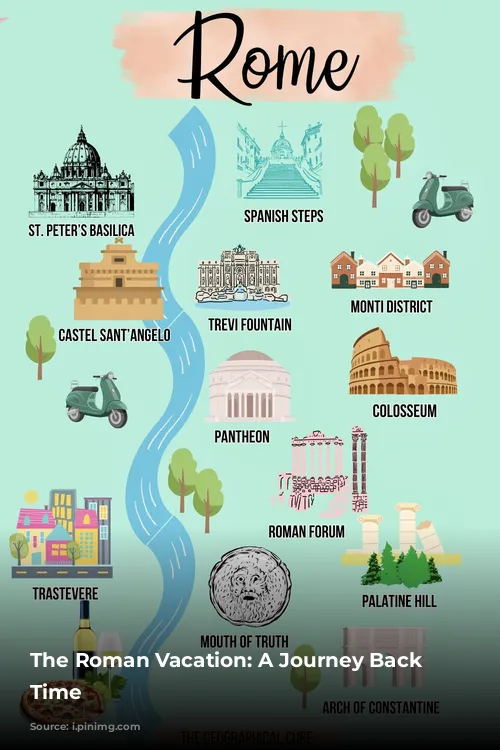Imagine this: a luxurious villa overlooking the shimmering Gulf of Naples. The Roman patrician Gaius Antonius, basking in the sun, enjoys the finest wines and delicacies. He escaped the bustling city of Rome to find peace and tranquility in his countryside retreat. This is the Roman version of a summer getaway, and it’s more common than you might think.
Beyond the Coliseum: The Roman Pursuit of Pleasure
Ancient Rome wasn’t just about conquering new lands and building grand structures. The Romans also knew how to indulge in leisure and luxury. Just like modern travelers, they sought adventure and relaxation in far-off destinations.
The Gulf of Naples was the prime destination for the Roman elite. The poet Horace himself praised the beauty of Baiae, a bustling seaside town. Villas dotted the coastline, and excursion boats skimmed the turquoise waters. In the evenings, lavish oyster dinners were the highlight of social gatherings.
But it wasn’t just the wealthy who ventured out. Less affluent Romans flocked to places like Tibur (Tivoli), Antium (Anzio), and the now-submerged Baiae. These destinations weren’t solely about sun and sand, though. Healing springs were a major draw, offering therapeutic baths in the heart of the Roman empire.
Thermal Baths: A Roman Ritual
The thermal baths were more than just a place to unwind. They were a vital part of Roman culture. The wealthy went a step further, building private baths right on the coast, a blend of relaxation and extravagance. Seneca, the Roman philosopher, criticized this indulgence, seeing it as a symbol of Roman decadence.
But Baiae wasn’t all serenity. It was also a hub for wild parties and reckless behavior. Seneca complained about the drunken revelry and loud celebrations. Even the renowned poet Martial took aim at the frequent adultery that was commonplace in the seaside town.
Travel Through the Empire: A Journey of Discovery
The Roman Empire stretched far and wide, offering numerous travel opportunities. With Latin spoken throughout the empire, communication wasn’t a barrier. Well-maintained roads, built originally for the Roman army, facilitated travel by foot, carriage, or sedan chair.
Hostels dotted the route, providing food and lodging. Many Romans sought hospitality from local families, relying on the “hospitium publicum”, a system of reciprocal hospitality. For those who chose the sea route, merchant ships provided transport. While seasickness was a concern, pirates were relatively uncommon.
The Call of the Exotic: Egypt and Beyond
Egypt held a special allure for the Romans. The Pyramids of Giza, the Sphinx, and the Lighthouse of Alexandria drew hordes of travelers. But the allure of history and ancient wonders extended beyond Egypt.
Romans followed in the footsteps of Homer, exploring Troy. They visited the sites of famous battles, like Marathon, where the Greeks triumphed over the Persians. Educational trips to places like Naples and Athens were also common.
Only the “barbarians”, those outside the Roman and Greek spheres, were considered undesirable destinations. The ancient temples of Greece were a major attraction. Local guides explained the significance of places like the Oracle of Delphi and Mount Olympus. Even back then, there were travel guides, like Pausanias’s account of the wonders of his homeland.
The Souvenir Economy: Ancient Origins
Just like modern tourists, the Romans were eager to bring home souvenirs. Miniature pyramids, silver statues, and clay jars adorned with the Lighthouse of Alexandria were popular choices.
Emperor Hadrian took souvenir collecting to a whole new level. He had miniature models of famous sights built in his Villa Adriana, a testament to his love for travel and history.
The Romans, despite their focus on conquering new lands, were also avid explorers. Their thirst for adventure, relaxation, and discovery echoed through the centuries, leaving a lasting legacy on the world of travel.
This article was originally written in German and adapted into English by Louisa Schaefer.
